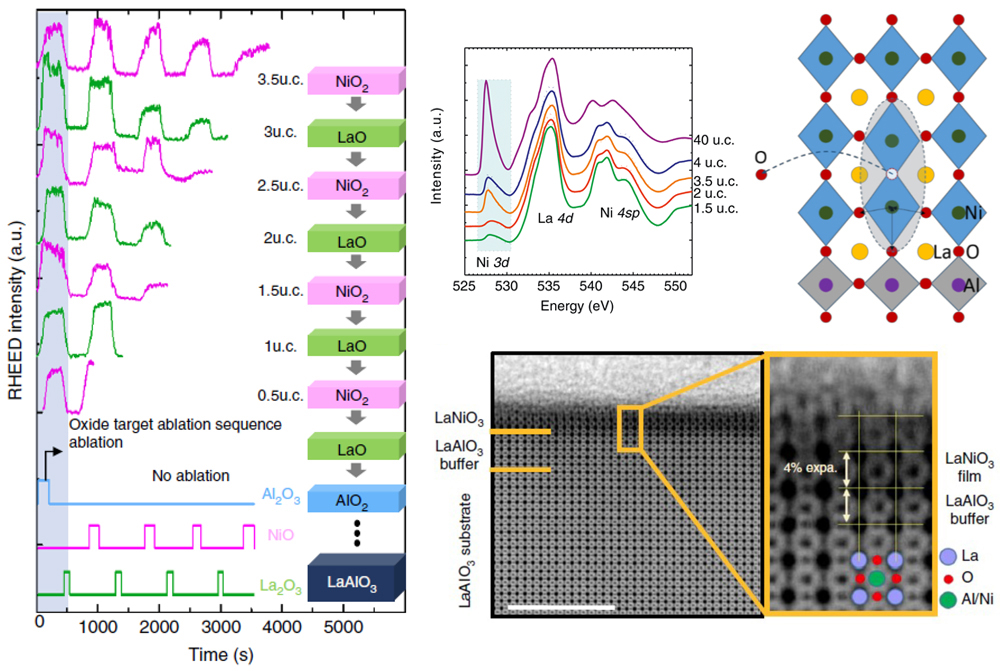Transition-metal oxide materials demonstrate a wide range of functionalities. For example, their ability to transition from metal to insulator could be useful for making advanced electronic devices. First, though, we need to discover which “knob” to turn to tune this property: is it film thickness, mechanical strain between layers, or something else?
In bulk form, LaNiO3 is metallic at all temperatures. In ultrathin films a few unit cells thick, however, it exhibits a metal-to-insulator transition (MIT) as the temperature varies. Quantum confinement (“low dimensionality”) and epitaxial strain have been invoked to explain this, but calculations show that they aren’t sufficient to induce the MIT. Other factors—such as oxygen vacancies—might also be in play.
To see what happens when oxygen vacancies are minimized, researchers grew ultrathin LaNiO3 films of varying thicknesses (1.5 to 40 unit cells, or u.c.) using atomic layer-by-layer laser molecular-beam epitaxy (ALL-laser MBE) at relatively high oxygen pressures. A variety of techniques were then used to probe the films’ electronic and structural properties. Polarization-dependent x-ray absorption spectroscopy (XAS) was done at ALS Beamline 4.0.2, with additional measurements taken at the National Synchrotron Light Source (NSLS). Other techniques included scanning transmission electron microscopy (STEM) at the Molecular Foundry and x-ray reflectivity at Brookhaven National Laboratory.
The results revealed that oxygen vacancies were not completely eliminated and cannot be neglected when considering the MIT in LaNiO3 films. Furthermore, because LaNiO3 metallic states are fragile and can be easily disturbed by defects, oxygen vacancies can definitely serve as another “knob” for tuning electronic properties, in addition to layer thickness and epitaxial strain.

M. Golalikhani, Q. Lei, R.U. Chandrasena, L. Kasaei, H. Park, J. Bai, P. Orgiani, J. Ciston, G.E. Sterbinsky, D.A. Arena, P. Shafer, E. Arenholz, B.A. Davidson, A.J. Millis, A.X. Gray, and X.X. Xi, “Nature of the metal-insulator transition in few-unit-cell-thick LaNiO3 films,” Nat. Commun. 9, 2206 (2018), doi:10.1038/s41467-018-04546-5.